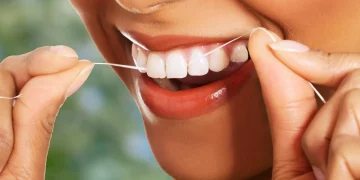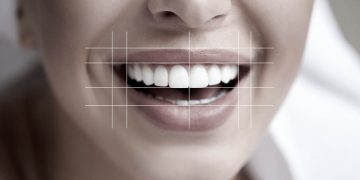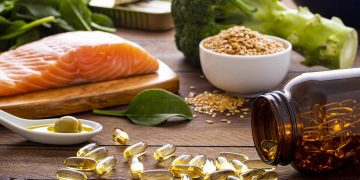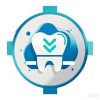Introduction
Maintaining good oral health is an essential part of overall well-being, and one of the key factors contributing to a healthy smile is diet. The foods we eat can have both positive and negative effects on our teeth and gums, making it crucial to make conscious decisions about what we consume. Traditionally, managing diet-related oral health has been based on general guidelines and visits to the dentist for routine check-ups. However, with the advent of digital technology, there are now more tools than ever to help us proactively monitor our diet and its impact on oral health.
Digital technology has revolutionized healthcare in many areas, and oral health is no exception. Today, a range of apps, devices, and software solutions are available to track the foods we eat, monitor how they affect our teeth, and provide real-time data that helps us make healthier choices. These digital tools empower individuals to take charge of their oral health in a way that was once not possible. By using these resources, individuals can reduce their risk of cavities, gum disease, and other dental issues related to diet.
This article explores how digital technology can help monitor your oral health diet, the benefits of real-time data, and how digital tools can assist users in avoiding harmful foods. By integrating these technologies into your routine, you can proactively maintain your oral health while enjoying a healthier lifestyle.
Apps and Devices for Monitoring Diet and Oral Health
The digital age has brought about several innovative tools and devices designed to help individuals track their diet and its impact on their oral health. Some of these tools focus specifically on tracking food intake, while others are built to monitor the condition of your teeth and gums. Here are a few examples of digital tools that can enhance your oral health monitoring:
1. Oral Health Tracking Apps
There are several apps available that allow users to track both their diet and their oral health. These apps typically have features that allow users to log the foods they eat, assess their nutritional value, and determine their impact on oral health. Many of these apps come with built-in algorithms that offer personalized recommendations based on the user’s eating habits, and some even provide reminders to maintain good oral hygiene habits, such as brushing and flossing.
For example, apps like MyDental, TeethCare, and Oral-B Smart help users keep track of their oral care routine, dietary intake, and habits that affect teeth and gums. These apps often sync with smart toothbrushes, which we’ll discuss below, to track brushing patterns, oral hygiene routines, and even monitor the frequency of sugary or acidic food consumption.
2. Smart Toothbrushes and Oral Health Devices
Smart toothbrushes are an essential part of modern oral care. These devices connect to mobile apps and provide real-time feedback on your brushing habits. By tracking how long you brush, the pressure you apply, and the areas of your mouth you miss, these toothbrushes ensure you’re brushing your teeth effectively.
Some smart toothbrushes, such as the Philips Sonicare DiamondClean Smart and Oral-B Genius X, also have features that allow users to monitor their oral health habits, including brushing times, and recommend improvements. The data collected from these toothbrushes is stored in the associated apps, allowing users to track their oral health progress over time.
Additionally, smart flossing devices and other dental tools can offer further insights into how well you’re maintaining your oral hygiene. These devices can help users monitor whether they’re flossing regularly and how effectively they’re removing plaque from between their teeth.
3. Wearable Devices for Tracking Nutrition and Oral Health
Wearable devices, such as fitness trackers and smartwatches, have become essential tools for monitoring overall health, and many of these devices also offer features that can be used to track dietary habits and oral health. For instance, some smartwatches can help track your water intake, which is vital for maintaining a healthy mouth by promoting saliva production, which in turn neutralizes acids and helps prevent tooth decay.
Additionally, nutrition tracking apps like MyFitnessPal or LoseIt! allow users to log their food intake and track the nutritional value of what they eat. While these apps aren’t specifically designed for oral health, they can help users identify potential dietary risks to their teeth, such as high sugar or acidic foods, and adjust their habits accordingly.
4. Dental Health Monitors
Some devices and tools are designed to specifically monitor oral health conditions. These devices can help detect early signs of issues such as tooth decay, gum disease, and plaque buildup. Technologies like Saliva Testing Kits and Intraoral Cameras are becoming more affordable and accessible for at-home use, giving users the opportunity to closely monitor the condition of their teeth and gums. Some newer gadgets even use AI-powered technology to help analyze your oral health and provide recommendations for dietary changes.
The Benefits of Real-Time Data on Tooth and Gum Health
One of the most significant advantages of digital technology in oral health is the ability to gather real-time data. In the past, dental health assessments were typically made during bi-annual check-ups or after the onset of issues like tooth pain or gum bleeding. Now, real-time data enables individuals to continuously monitor their oral health status and diet, leading to earlier detection of potential problems and quicker intervention.
1. Early Detection of Oral Health Issues
With real-time data, individuals can track changes in their oral health and detect early signs of issues like cavities, gum disease, or enamel erosion. For example, if a user logs their food intake and notices that certain foods consistently lead to tooth sensitivity or discomfort, they can adjust their diet to avoid these foods and consult a dentist if needed. This early detection is crucial for preventing more severe dental issues down the road.
2. Real-Time Feedback on Brushing and Flossing Habits
Smart toothbrushes and oral health apps can provide instant feedback on brushing and flossing habits. By understanding how effectively they are cleaning their teeth, users can adjust their oral care routine to improve their dental hygiene. These insights help reduce plaque buildup, prevent cavities, and maintain healthy gums.
3. Tracking Nutrient Intake and Oral Health Impact
Tracking your diet with apps that monitor your nutrition is invaluable for understanding how certain foods impact your oral health. For example, many individuals don’t realize how acidic foods like citrus fruits or soda can contribute to enamel erosion or how sugary snacks can increase the risk of cavities. Real-time data gives users a comprehensive picture of their dietary habits, helping them make more informed choices that support long-term oral health.

How Digital Tech Can Help Users Avoid Foods That Harm Their Teeth
Diet plays a crucial role in the health of your teeth and gums. While some foods promote oral health, others can have detrimental effects, such as causing tooth decay or leading to gum disease. Digital tools are instrumental in helping users avoid foods that harm their teeth by providing personalized dietary recommendations based on their unique oral health needs.
1. Identifying Harmful Foods
Through apps and devices that track food intake and monitor oral health, users can identify which foods have negative impacts on their teeth. For example, if a person logs sugary or acidic foods, they can quickly notice patterns and understand how these foods contribute to dental problems. With this information, they can make healthier choices and limit foods that damage their enamel or promote plaque buildup.
2. Educating Users on Nutritional Choices
Digital health tools often include educational components that explain how different foods affect your oral health. These resources can teach users about the importance of eating foods that promote healthy teeth and gums, such as foods rich in calcium, fiber, and vitamin C. Digital tools may even recommend alternative snack options that are healthier for your teeth.
3. Personalized Diet Plans
By collecting data on a user’s oral health, digital tools can create customized diet plans that focus on improving tooth and gum health. These plans may involve reducing sugar intake, incorporating more tooth-friendly foods, or avoiding acidic foods that erode enamel. By following these personalized recommendations, users can prevent damage and maintain optimal oral health.
Conclusion
The role of digital technology in oral health is growing, and it is now possible for individuals to monitor their diet’s impact on their teeth and gums in real time. With the help of apps, smart devices, and wearable technology, users can track their food intake, identify harmful dietary habits, and receive personalized recommendations to improve their oral health. By integrating these tools into their daily routine, people can take a proactive approach to their dental care, preventing future issues and maintaining a healthy smile for years to come.
As digital technology continues to advance, the ability to monitor and improve oral health through diet will only become more precise, efficient, and accessible. The future of oral health is undoubtedly digital, and embracing these innovations can lead to better, more proactive dental care.













































Discussion about this post